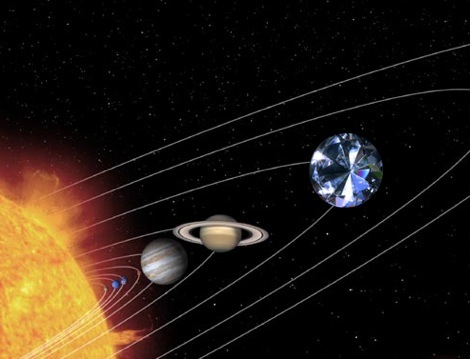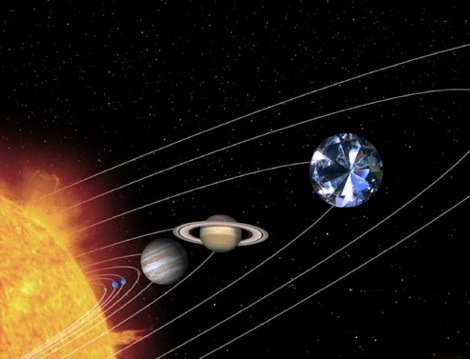
Exoplanet 55 Cancri e is not habitable; for starters, it’s much too hot, with a temperature of 3,900 degrees, and its 18-hour year would likely mess with our heads anyway. But if we could live there, we would be rolling in it, because 55 Cancri e appears to be essentially a 26-septillion-pound chunk of diamond.
Well, there’s some graphite in there too — all told, only a third of the planet’s mass is likely diamond. But that’s still a quantity of diamond three times Earth’s mass, i.e. enough to give Marilyn Monroe several consecutive heart attacks. We’re talking about an engagement ring even Kim Kardashian wouldn’t wear.
55 Cancri e is only 40 light-years away — not a weekend trip or anything, but close enough that its star is visible to the naked eye. It’s called a “super-Earth” planet because it’s much larger than Earth, twice the size and eight times the mass, though the fact that it’s also basically wearing the world’s largest set of grills doesn’t really hurt. Scientists initially thought it was full of super-heated water, but the new data found by researchers from Yale University suggest that there’s no water at all — mainly carbon in the form of diamonds and graphite.
Since it’s impossible to spend a planet, the discovery of 55 Cancri e has only scientific value. Luckily, that’s potentially considerable. It’s the first rocky (i.e. non-gas) planet we’ve found with a fundamentally different chemistry from our own, and that’s important, says Yale postdoctoral researcher Nikku Madhusudhan:
The identification of a carbon-rich super-Earth means that distant rocky planets can no longer be assumed to have chemical constituents, interiors, atmospheres, or biologies similar to those of Earth, Madhusudhan said. The discovery also opens new avenues for the study of geochemistry and geophysical processes in Earth-sized alien planets. A carbon-rich composition could influence the planet’s thermal evolution and plate tectonics, for example, with implications for volcanism, seismic activity, and mountain formation.
Or possibly it will turn out that the whole place was custom-built for extremely rich aliens with the technology to contract planets. We’ll reserve judgment until we find out whether the rest of the 55 Cancri system contains planets made of gold, fur, cherub-imagery rugs, and fancy cheese.



